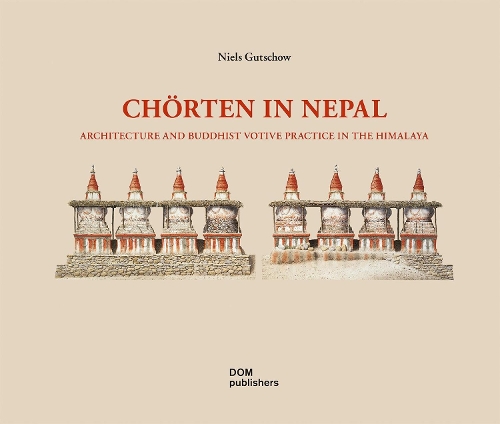
Chrten in Nepal: Architecture and Buddhist Votive Practice in the Himalaya
(Hardback)
Publishing Details
Chrten in Nepal: Architecture and Buddhist Votive Practice in the Himalaya
By (Author) Niels Gutschow
DOM Publishers
DOM Publishers
21st September 2021
Germany
Classifications
General
Non Fiction
Architecture
History of architecture
Physical Properties
Hardback
580
Width 256mm, Height 216mm
Description
For more than two millennia Buddhism shaped the cultures of Central, South, Southeast, and East Asia. Each territory had its own peculiar way of developing representations of the Buddha, the Bodhisattvas, and a variety of guardian deities and saints.
Of particular importance is the representation of the Buddha and his teachings in an iconic form in the shape of an impassable building. Called Stupa in Sanskrit, and Chrten in Tibetan, these structures not only characterize the urban space of the Newars in the Kathmandu Valley. They also mark the access to Tibetan villages in northern Nepal, line the trails across high passes, and stud topographically prominent places. By their thousands, they transform wilderness into a landscape that promises shelter, protection, and well-being.
584 maps, architectural drawings, and photographs, produced from 1970 to 2008, document the rich cultural heritage of the Tibetan and Tamang enclaves along the range of the high Himalaya.
Author Bio
Niels Gutschow, b. 1941, studied architecture in Darmstadt. He divides his time between research into war-time and post-war architecture and town planning in central Europe and the history of architecture and sacred landscapes in India and Nepal. He is an honorary professor of Heidelberg University (South Asia Institute, Institute for the History of Culture and Religion in South Asia).
